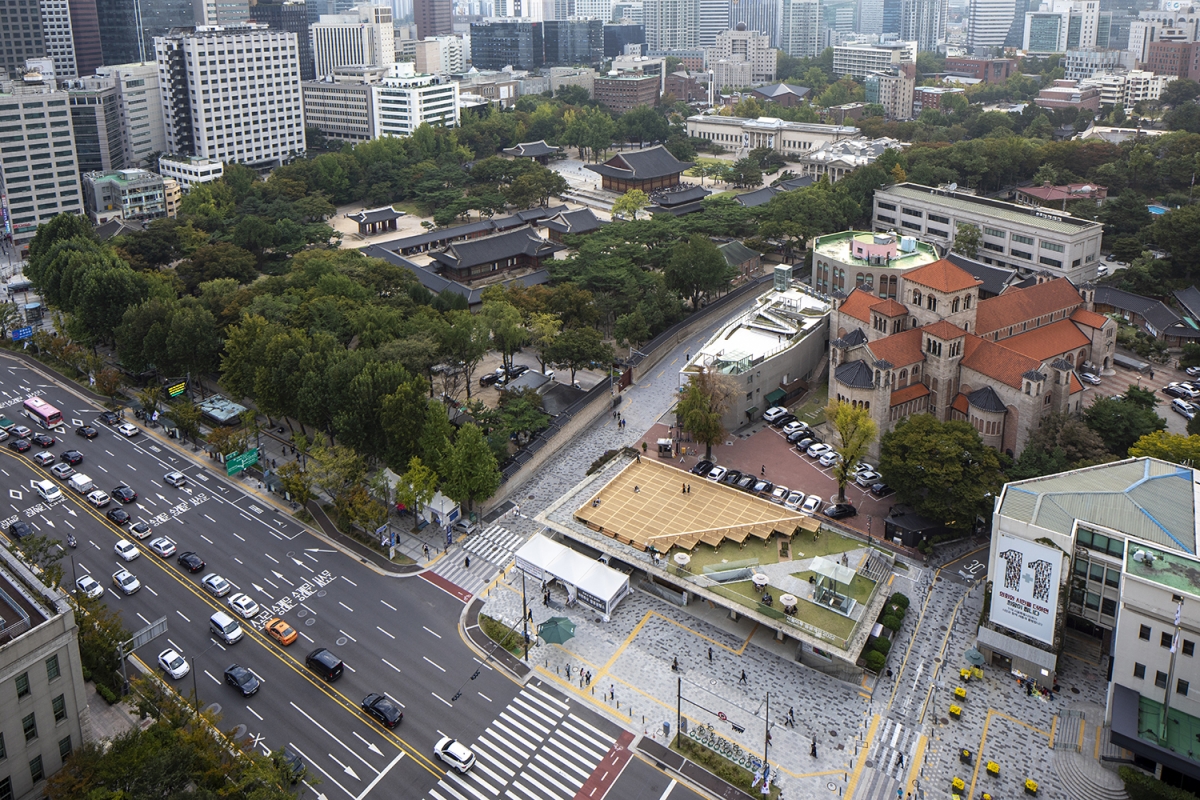SPACE December 2022 (No. 661)

Installation view of ‘Seoul Daecheong’, Image courtesy of Seoul HOUR
The rooftop of Seoul Hall of Urbanism & Architecture (Seoul HOUR), also called Seoul MARU, contains 126 resting spaces. Seoul HOUR has been offering a public program to utilize the rooftop since last year, and this year’s winner is ‘Seoul Daecheong’. Kang Hyunseok, Kim Gunho, and Lee Jongchul (co-principals, SGHS, covered in SPACE No. 635) focused on the meaning and cultural significance of the exhibition site. The main concept of the project, daecheong (wooden floor), makes reference to the large spaces between rooms in a hanok. It focuses on the fact that the exhibition hall is located between functionally or historically meaningful spaces such as Deoksugung Palace, Seoul City Hall, Seoul Metropolitan Council, Seoul Cathedral Anglican Church of Korea. There is also the experience of sitting on the wooden floor of a hanok and sensing one’s surroundings. Visitors take off their shoes and go up to ‘Seoul Daecheong’ to enjoy the sun, feel the wind, and look at the cityscape. Natural sounds like insects and streams are played from the speakers, and the moss garden, which is built under the work, appears between the lattice structures of the flat. If the ‘Seoul Urban Pinball Machine’ (covered in SPACE No. 645) created a public space through pinball games last year, it has also prepared an opportunity to feel the city from Oct. 5 to Dec. 7.
Meanwhile, the exhibition hall displayed works that participated in the competition, alongside the selected works, until Nov. 13. Kim Hanjoong (principal, ground architects, covered in SPACE No. 645) struggled with the role of the square and flat, and Kim Hyunjong (principal, ATELIER KHJ, covered in SPACE No. 651) struggled to develop a relationship with the surrounding area. Yang Sunggoo (principal, Ether ship) developed a swing that everyone enjoys regardless of age, Oh Sanghoon (professor, Dankook University) + Lee Seungyoub (principal, ARCH166) developed a sound-based urban amplifier and Hwang Dongwook (covered in SPACE No. 652) proposed a garden made of 3D printed stones.




